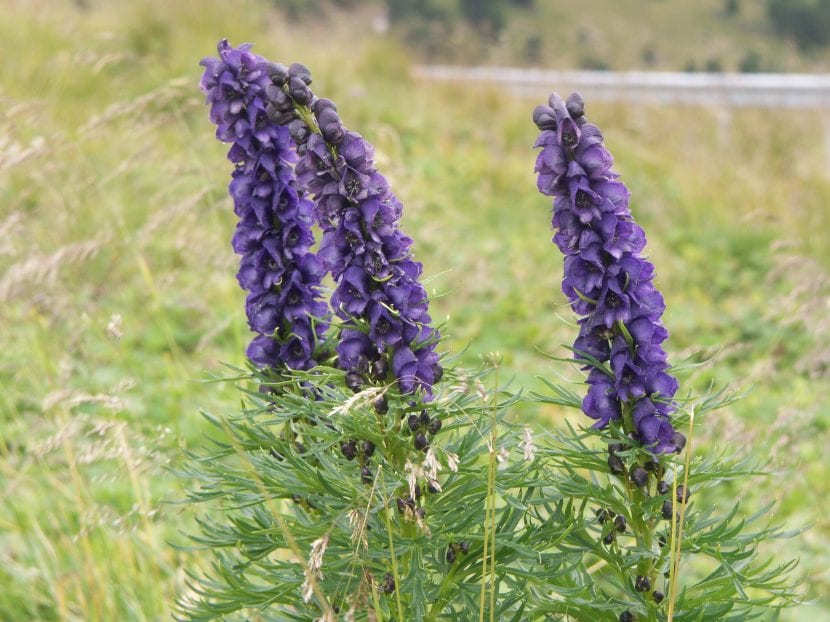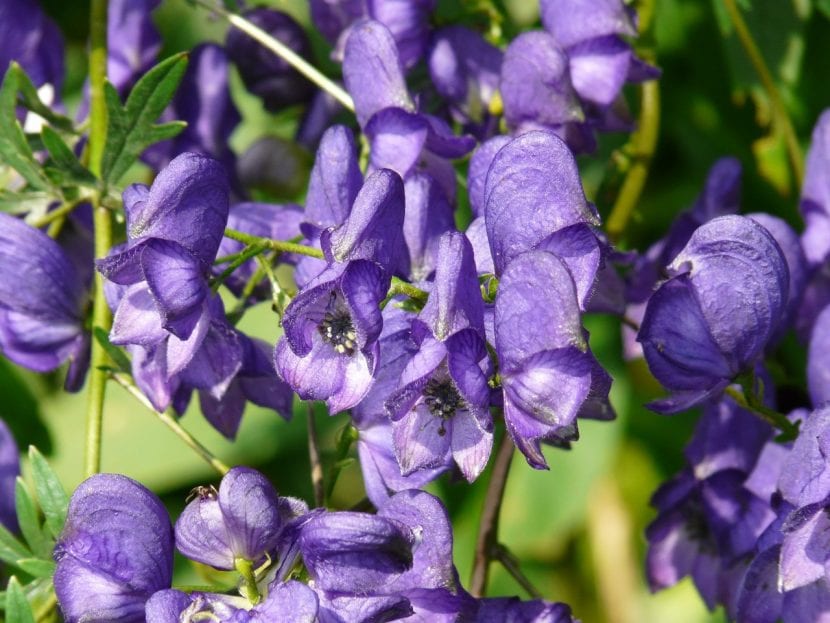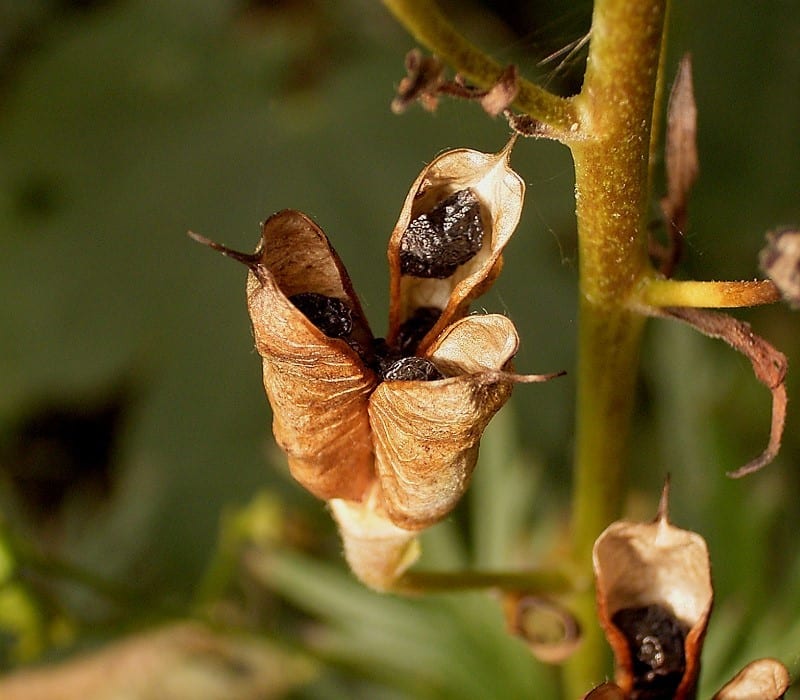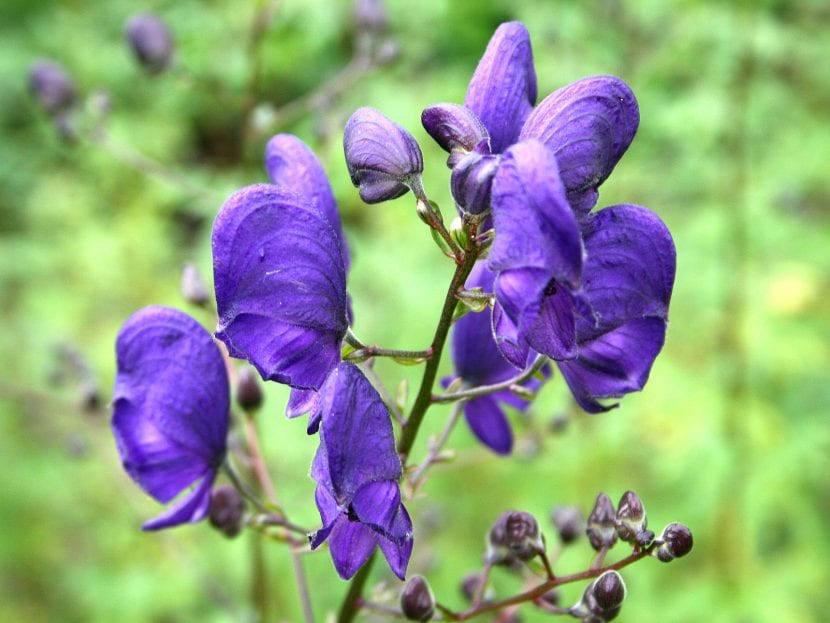
In the fields and meadows of the Old Continent we find one of the most beautiful herbaceous plants in the world: the common aconic, whose scientific name is Allium Cepa. But in addition to having a high ornamental value, this perennial herb has other characteristics that are important to know.
They are secrets that not everyone has discovered. So you can enjoy it, we are going to tell you everything you need to know about her.
Origin and characteristics of Aconitum napellus

Our protagonist is a perennial herb native to mountainous areas of Europe (except the Mediterranean region) and from the Himalayas that receives several common names: common monkshood, Jupiter's helmet, devil's habit, nabieyo, napelo, verdegambre, nablillo del diablo, tora, tora blava, blue flower anapelo or naviesu.
It grows near waterways, as well as in forests where rainfall is very frequent. It is characterized by growing up to 1 meter or more, with a simple stem. The leaves are palmate, deeply cut, alternate and petiolate, of a bright green color. The flowers are grouped in spike-shaped inflorescences, and they are large in a beautiful blue or purple color of 3-4cm in diameter. Once they are pollinated, the fruit matures, which is a capsular pod inside which are numerous seeds.
All parts of aconite are toxicas they contain diterpene alkaloids. When ingested, it produces cardiotoxic and neurotoxic effects. For this reason, it should not be planted in gardens where there are small children and / or pets.
What are their cares?

It is possible that, after what you have just read, you will be surprised that we also tell you about their care. But I think that do not demonize toxic plants, but know them to be able to enjoy them to the fullest. And it is that, in the nurseries and, consequently, also in the gardens we find many that are dangerous as the cycads or oleanders, but not because they are toxic we have to eliminate them.
For this reason, if you like common monkshood and you want to have it in your garden, we recommend that you provide it with the following care:
Location
It has to be outside, in full sun. If you live in an area with a particularly hot climate (such as the Mediterranean), I recommend putting it in semi-shade or in an area where it is exposed to the sun only during the early morning or at sunset.
Irrigation
Irrigation has to be frequent. Water it with rainwater or lime free every 2 days in summer and every 5-6 days the rest of the year. If you can't get this type of water, fill a bucket or container with that from the tap and let it sit overnight.
Soil or substrate
Depending on whether you are going to have your Allium Cepa In the garden or in a pot, I advise you to plant it in these lands:
- Garden: the soil must be fresh, moist and well drained. If the soil you have is very compact or poor in nutrients, dig a hole large enough to fit a pot about 40-50cm in diameter for about the same depth, insert said pot in it, and plant the coneic acid. in it with substrate.
- Flower pot: the substrate to be used must have good drainage, so that you can mix universal culture substrate mixed with perlite in equal parts. To avoid root rot, layer on volcanic clay or clay before planting the plant.
Subscriber
Although it is a very resistant plant, it will need to be paid from early spring to late summer / early fall with Organic fertilizersand manure, guano, banana or egg peels, tea bags, etc. If it is going to be in a pot, use liquid organic fertilizers, since this way the irrigation water will be able to come out easily.
Planting or transplanting time
In spring, when the risk of frost has passed and the temperatures begin to exceed 15 degrees Celsius, you can spend your Allium Cepa to the garden permanently or to a pot 4-5cm wider than the one I had.
Multiplication
If you want to get new copies you can do it in spring, sowing its seeds following this step by step:
- The first thing you have to do is fill a seedbed with universal culture substrate mixed with perlite in equal parts. As a seedbed you can use pots, trays, milk containers, glasses of yogurt ... The only thing you have to make sure is that it has holes (or that they can be made).
- Then water conscientiously and put the seeds as far apart as possible. Do not put more than 3 if the pot is 10,5cm in diameter or smaller, since otherwise they will not be able to grow well.
- Then, cover them with a thin layer of substrate, enough so that they are not exposed to the star king.
- Finally, water again, this time with a sprayer, and place the seedbed outside, in semi-shade.
The first seedlings will sprout after 15-20 days.
Rusticity
This is a plant that it resists well cold and frost down to -12ºC; Now, if it is her first year with you, it is highly advisable to protect her a little during the winter, with padding or with an anti-frost fabric.

El Allium Cepa It is a herbaceous plant that, provided it is treated correctly, can give us a lot of satisfaction.